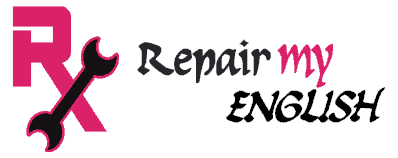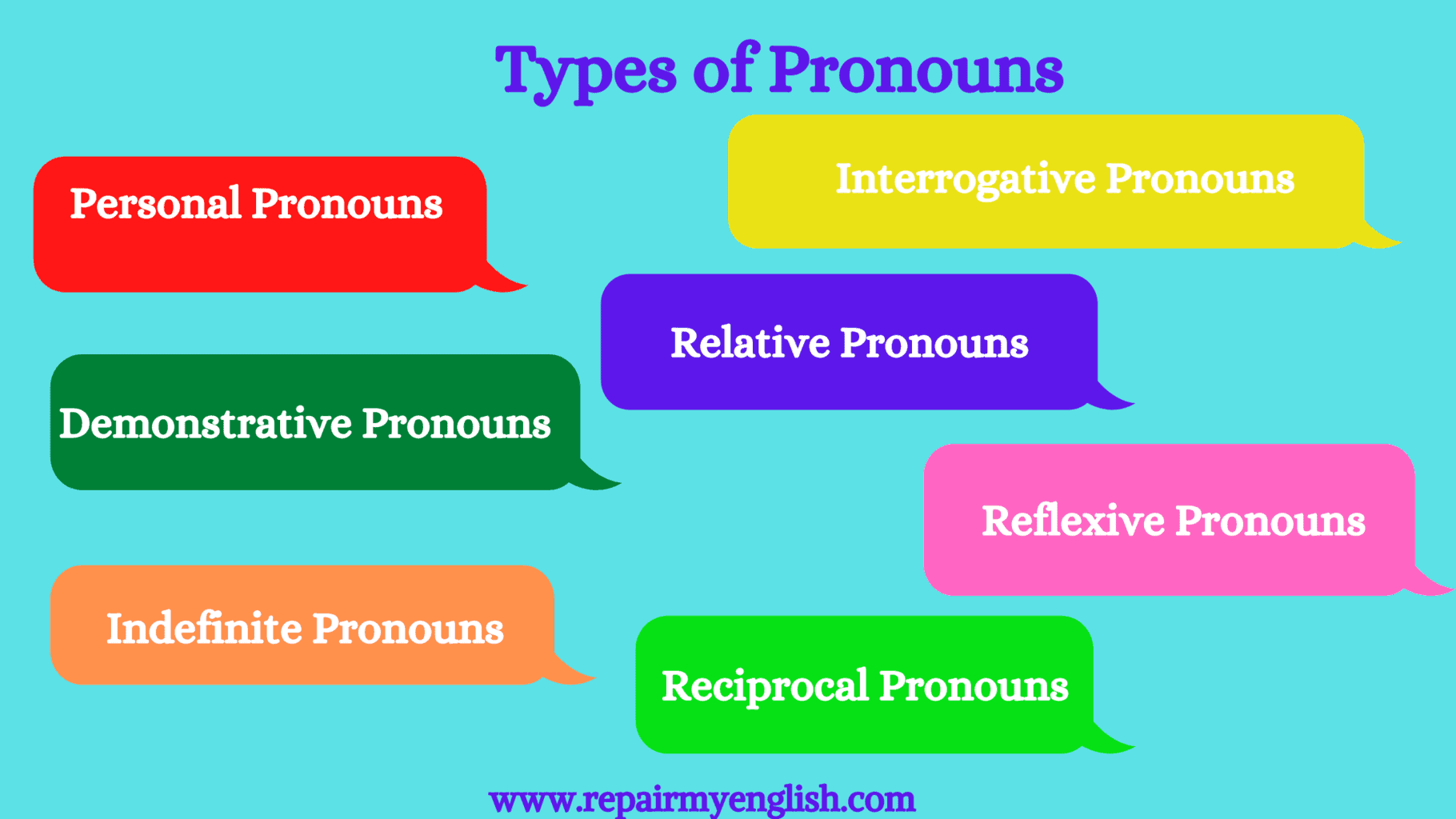What is the meaning of Pronoun?
Pronouns are used in place of a noun to avoid the repetition of nouns in the sentences.
For example:
Vinay is my cousin. He works as an Assistant Manager in the bank.
In the first sentence, Vinay is a noun. In the following sentence, he is used for Vinay as a pronoun.
This blog has covered the definition of Pronouns and examples. It has also covered various kinds of Pronouns.
Types of Pronoun:
Personal Pronoun:
Personal Pronouns are used to represent people.
There are 3 types of personal pronouns:
First Person: The first person always tells about himself in the sentence.
For example:
I, we, my, mine, our, us.
Second Person: The second person is the one to whom we speak.
For example:
You, your.
Third Person: The third person is used when we talk about other people.
For example:
He, she, it, they
Subjective personal pronouns: These pronouns are used as the subject of the sentence.
For example:
Indra Nooyi is a renowned businesswoman. She is known for her leadership qualities.
Objective personal pronouns: These pronouns are used as the object of the sentence.
For example:
Give this notebook to her.
Possessive Pronoun: These pronouns are used to represent possession.
For example:
This notebook is mine.
| Subjective Personal Pronoun | I, We, He, She, It, You, They |
| Objective Personal Pronoun | me, you, her, him, it, us, you, them |
| Possessive Pronoun | yours, his, its, ours, theirs, mine, hers |
Interrogative pronouns:
These pronouns are used to ask questions regarding a person or a thing. Interrogative pronouns include who, whom, which, and what. It is important to remember who and whom are used to denote people, which is used to represent things and animals.
For example:
- Who wrote the complaint letter to the Director?
- Which is the best college in this state?
Relative pronouns:
These pronouns are used to connect one phrase and clause with another. The noun for which the relative Pronoun is used is called an antecedent.
For example:
- This is the girl who stood for me in the class.
Demonstrative Pronoun:
This Pronoun is used to denote a person or an object that acts as a noun in a sentence. Verbs always follow demonstrative pronouns. Besides, “this” and “that” are used as a singular, and “these” and “those” are used as a plural. In addition, “these” is the plural of “this,” whereas “those” is the plural of “these”. Demonstrative pronouns can be near or far in distance or time when used to denote an object or objects:
Example: This, that, these, those
| This | Singular | Near in distance or time |
| That | Singular | Near in distance or time |
| These | Plural | Far in distance or time |
| Those | Plural | Far in distance or time |
Examples:
- This is my handbag.
- That is her problem.
- These are difficult questions.
- Those are her assignments.
Indefinite pronouns:
Indefinite pronouns are used to refer to individuals or objects without specifying their identity. For individuals, we use pronouns ending in -body or -one, whereas, for things, we use pronouns ending in –thing. Indefinite nouns include:
Another,anybody,anyone,anything,each,either,enough,everybody,everyone,everything,less,little,much,neither,nobody,nothing,Oneanother,Somebody,Someone,Something,Both,Few,Fewer,Many,Others,Several,All,Any,More,Most,None,Some.
Reflexive pronouns:
When the subject and object of a phrase are the same person or thing, reflexive pronouns are used to replace the object. They usually come after the verb, but they can also come after a preposition. All reflexive pronouns that end in “–self” are singular reflexive pronouns or end in “-selves” plural reflexive pronouns.
| Singular Reflexive Pronoun | myself, yourself, himself, herself, itself |
| Plural Reflexive Pronoun | yourselves, ourselves, themselves |
Examples:
- She bought herself a new car.
- I hurt myself while chopping vegetables.
- We can create a new website ourselves.
- The air-conditioner maintains cooling itself.
- They are designing the house themselves.
Reciprocal Pronouns:
These pronouns express mutual relationship or activity. There are just two reciprocal pronouns: “each other” refers to two people and “one another” refers to large groups.
Examples:
- Anil and Anish support each other.
- We are four friends. We support one another.

